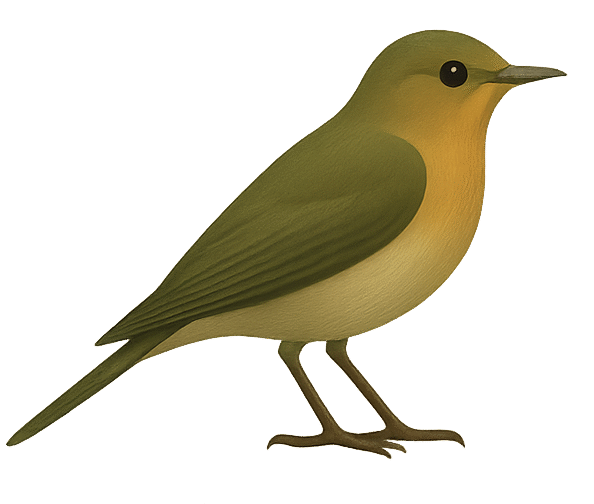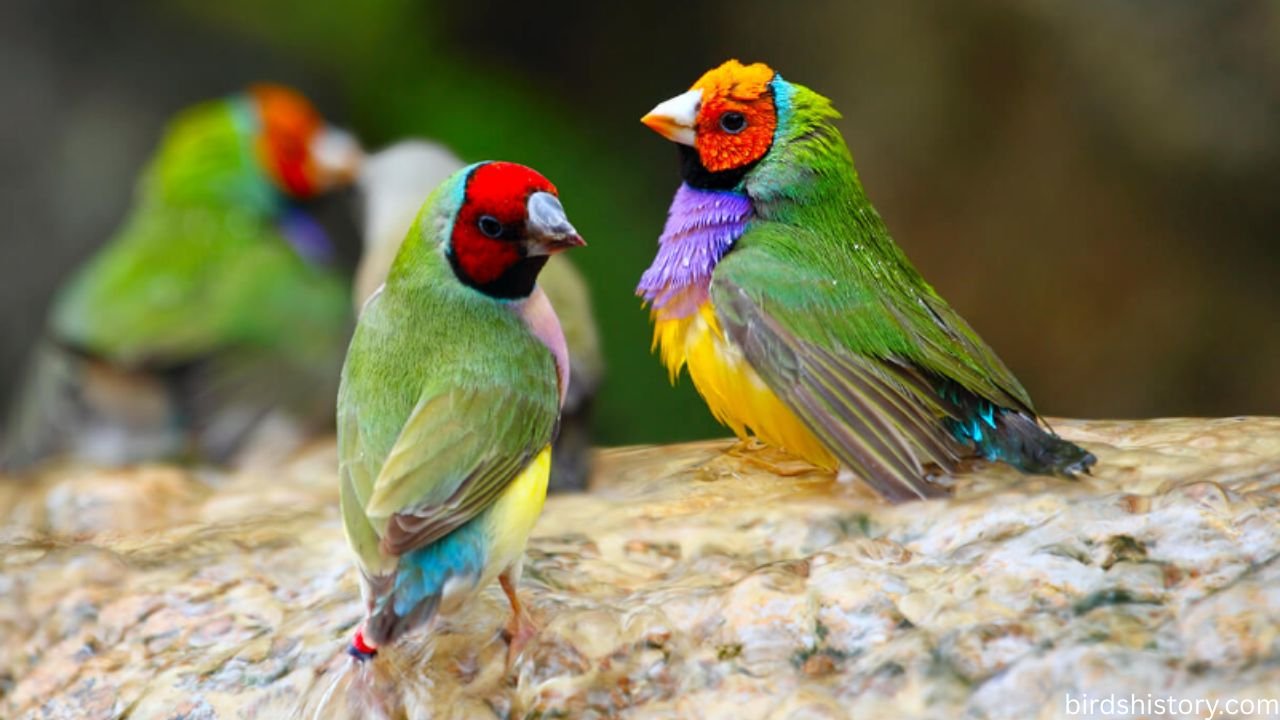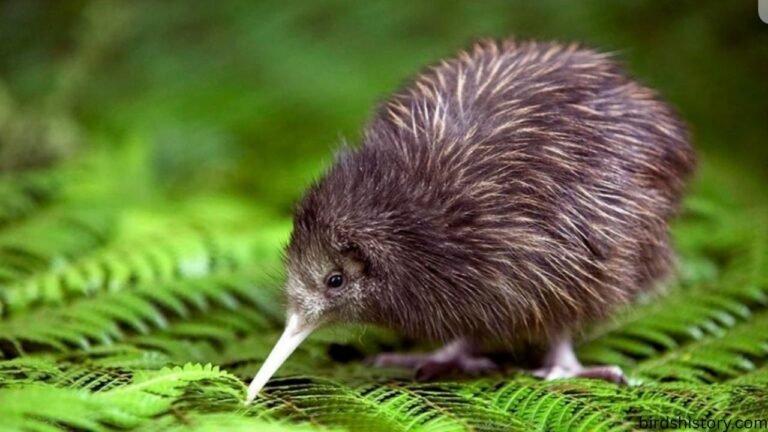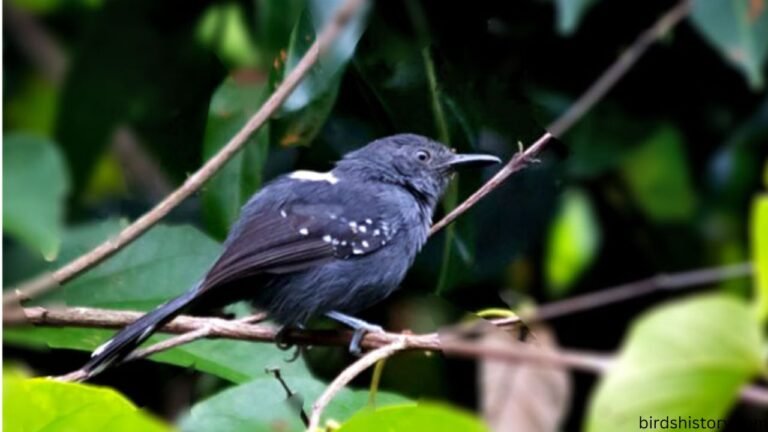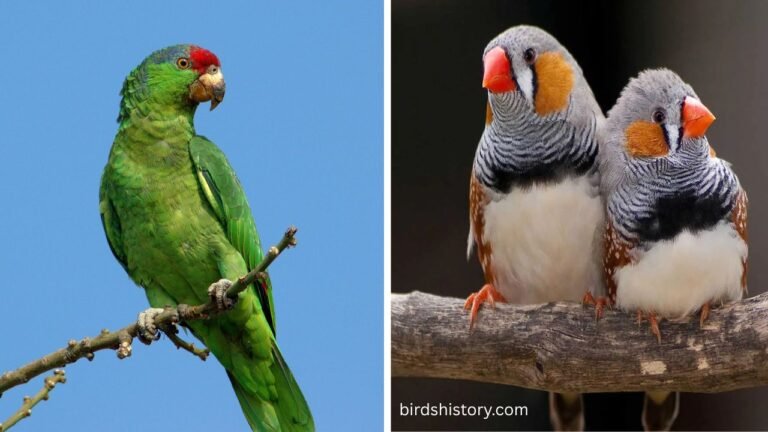Gouldian Finch: The Rainbow Gem of the Bird World
Few birds capture the imagination quite like the Gouldian Finch. With its dazzling mix of colors—often referred to as “living jewels”—this tiny finch has become one of the most admired species both in the wild and in aviculture. Native to northern Australia, the Gouldian Finch is not just admired for its beauty but also valued for its unique role in ecosystems and its fascinating behaviors.
One surprising fact is that Gouldian Finches naturally come in three different head color morphs—red, black, and yellow—and all of them can exist within the same flock. This diversity makes them truly stand out among finches and adds to their popularity in aviaries worldwide.
Gouldian Finch Taxonomy / Classification
- Common Name: Gouldian Finch (also known as Lady Gouldian Finch, Rainbow Finch)
- Scientific Name: Erythrura gouldiae
- Family: Estrildidae
- Order: Passeriformes
- Class: Aves
Also read: /andean-cock-of-the-rock/
The bird was named in honor of Elizabeth Gould, the wife of British ornithologist John Gould, who first described the species in the 19th century.
Gouldian Finch Physical Description
The Gouldian Finch is a small but strikingly colorful bird, usually measuring 5 to 6 inches (12–15 cm) in length.
- Plumage: Their feathers resemble a rainbow, with vibrant hues of green, yellow, purple, blue, and black.
- Head Colors: They can have red, black, or yellow heads, with black being the most common.
- Beak: Small and pale, turning reddish during breeding season in males.
- Sexual Dimorphism: Males are more vividly colored, with brighter purple chests and yellow bellies. Females tend to have softer, duller shades.
- Juveniles: Young Gouldians are much plainer, with olive-green plumage that provides camouflage in the wild. They also have distinct reflective nodules around their mouths, which help parents feed them in the dark nest.
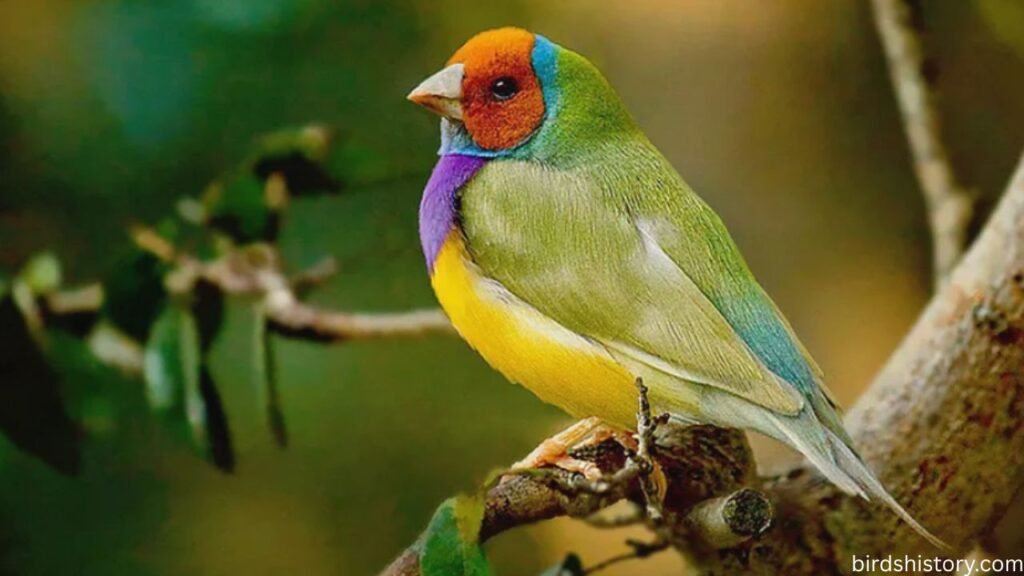
Habitat and Range of Gouldian Finch
The Gouldian Finch is native to northern Australia, particularly in regions like the Northern Territory, Western Australia, and parts of Queensland.
- Preferred Environment: They thrive in tropical savannas, open grasslands, and lightly wooded areas where tall grasses provide food and nesting materials.
- Seasonal Movement: These finches move around in response to rainfall and food availability. They are not long-distance migrants but will shift territories to follow seeding grasses.
- Captivity: Today, Gouldian Finches are also widely bred in captivity and can be found in aviaries across the globe.
Gouldian Finch Diet and Feeding Habits
Gouldian Finches are primarily granivores, meaning seeds form the bulk of their diet.
- Wild Diet: Grass seeds, particularly from native Australian species like sorghum and spinifex grasses.
- Captive Diet: Finch seed mixes, supplemented with fresh greens, egg food, and cuttlebone for calcium.
- Feeding Behavior: They feed mostly on the ground or on grass stalks, often in large flocks. Their synchronized feeding makes for a beautiful sight in the wild.
- Water Needs: They drink frequently and are often seen flocking to waterholes in the early morning or late afternoon.
Behavior and Lifestyle
The Gouldian Finch is a highly social bird, preferring to live in flocks, particularly outside the breeding season.
- Social Structure: Flocks may include hundreds of birds, with individuals of different head colors mingling freely.
- Flight Style: Their flight is quick and direct, often in short bursts between feeding areas and nesting sites.
- Vocalizations: Their song is soft and high-pitched, not as loud as some other finches, but still melodious.
- Mating Rituals: Males put on dazzling courtship displays, puffing out their colorful feathers, singing, and bobbing in front of females to attract mates.
Gouldian Finch Reproduction and Lifespan
Reproduction in Gouldian Finches is highly seasonal and closely linked to food availability.
- Breeding Season: Usually coincides with the wet season in northern Australia, when grass seeds are abundant.
- Nesting: They nest in tree hollows, termite mounds, or sometimes in man-made nest boxes when in captivity.
- Eggs: A typical clutch contains 4 to 8 small, white eggs.
- Incubation: Both parents share incubation duties, which last about 13–14 days.
- Chick Development: Chicks hatch naked and are fed by both parents. They fledge after about 3 weeks and become fully independent in another month.
- Lifespan: In the wild, Gouldian Finches live around 4 to 6 years, while in captivity, with proper care, they can live up to 8 years.
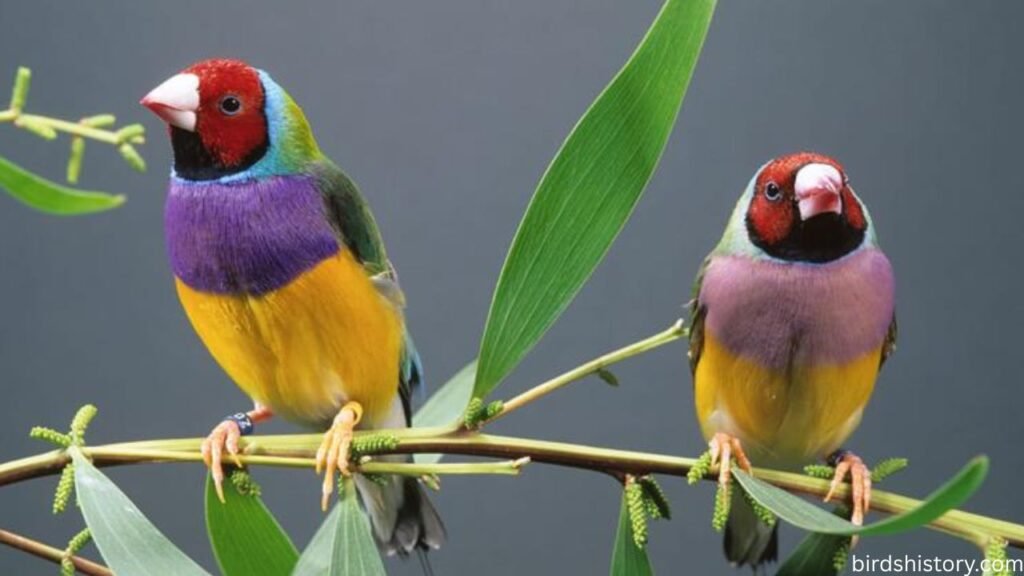
Predators and Threats
The Gouldian Finch faces numerous challenges in the wild:
- Predators: Snakes, larger birds, and feral cats are common threats. Nesting in tree hollows exposes them to predators like goannas.
- Environmental Threats: Habitat destruction, overgrazing by livestock, and uncontrolled bushfires have significantly reduced their wild population.
- Human Impact: In the past, trapping for the pet trade devastated numbers, but this has largely been controlled in recent decades.
Gouldian Finch Conservation Status
According to the IUCN Red List, the Gouldian Finch is currently classified as Near Threatened.
- Population Decline: Wild numbers dropped dramatically during the 20th century due to habitat loss and trapping.
- Current Efforts: Conservation programs in Australia focus on protecting habitat, controlling fires, and supporting breeding projects.
- Captive Breeding: Gouldian Finches are well established in aviculture, which has helped ensure the species survives, even if wild populations remain vulnerable.
Interesting Facts About Gouldian Finches
- They are sometimes called “Rainbow Finches” due to their dazzling multicolored plumage.
- Unlike many finches, Gouldians come in three natural head color variations: black, red, and yellow.
- Their chicks have glowing nodules around their beaks, which act as a feeding guide for parents in the dark.
- Males perform elaborate dances during courtship, showing off their brightest colors.
- Despite their small size, they are surprisingly hardy in captivity when cared for properly.
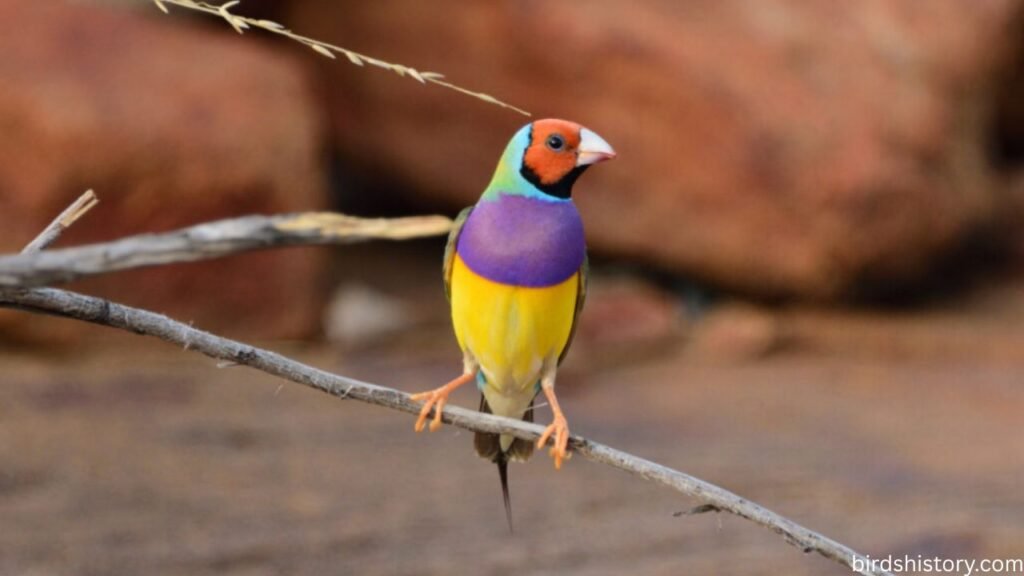
Conclusion
The Gouldian Finch is one of the most breathtaking birds in the world, often compared to a flying jewel. With its rainbow-colored feathers, fascinating breeding behaviors, and social lifestyle, it is no wonder that bird enthusiasts hold it in such high regard.
Yet, beyond its beauty lies an important message about conservation. Habitat loss and environmental challenges have placed pressure on wild populations, reminding us that even the most stunning creatures are vulnerable without protection.
Learning about the Gouldian Finch not only deepens our appreciation of this remarkable bird but also highlights the importance of preserving biodiversity for generations to come.
FAQs About Gouldian Finch
1. What makes the Gouldian Finch unique?
Its brilliant rainbow-like plumage and natural head color variations make it one of the most visually stunning finches in the world.
2. Where are Gouldian Finches found?
They are native to northern Australia, especially in savannas and grasslands.
3. Do Gouldian Finches make good pets?
Yes, but they require special care. They are best suited for aviaries rather than small cages because they need space to fly.
4. How can you tell male and female Gouldian Finches apart?
Males are more brightly colored, especially on the chest and belly, while females have softer, duller shades.
5. What do Gouldian Finches eat?
They mainly eat grass seeds but also enjoy fresh greens, fruits, and supplements in captivity.
6. Are Gouldian Finches endangered?
They are listed as Near Threatened, with declining wild populations due to habitat loss and past trapping.
7. How long do Gouldian Finches live?
They live 4–6 years in the wild, and up to 8 years in captivity with good care.
8. Can Gouldian Finches be housed with other birds?
Yes, they are generally peaceful, but they do best with other finches in spacious aviaries.
9. Do Gouldian Finches migrate?
They don’t migrate long distances, but they may move locally in search of food and water.
10. Why do Gouldian Finch chicks have glowing beak nodules?
The glowing nodules help parents see and feed them in the dark nest cavities.
